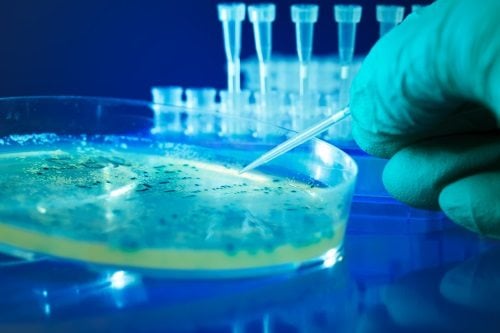Certain strains of Salmonella bacteria such as Salmonella Typhimurium (S. Typhimurium) are among of the most common causes of food-borne gastroenteritis.
Other strains of Salmonella such as S. Typhi are responsible for typhoid fever, which causes 200,000 deaths around the world each year.
Ensuring that food is clear of contamination, and water is clean are key to reducing the effects Salmonella can have, but there is a need for more effective ways to combat Salmonella once it is inside our bodies.
To address this, UK-based Institute of Food Research, supported by the Biotechnology and Biological Sciences Research Council, has been studying S. Typhimurium bacteria to understand how they transmit through the food chain and why they are so effective and dangerous once inside humans.
Attacks in the body
If food or water contaminated with S. Typhimurium is consumed, the first stage of infection is to get into the cells that line the gut.
These epithelial cells are adapted to defend against such attacks, but Salmonella can overcome these and make become more virulent.
It also needs these virulence genes to overcome the cells of the immune system, which it invades to move around the body.
According to a study published in the journal PLOS ONE, Dr Arthur Thompson and his team constructed S. Typhimurium strains lacking certain key genes in important metabolic pathways.
They then examined how well these mutated strains reproduced in human epithelial cells, grown in cultures.
“We found that glucose is the major nutrient used by S. Typhimurium,” said Dr Thompson.
Glucose found to fuel strain
Salmonella converts glucose to pyruvate in a process called glycolysis, which also releases energy needed to fuel growth and reproduction.
Knocking out one enzyme in glycolysis, and enzymes used to transport glucose into the bacteria severely reduced S. Typhimurium’s ability to reproduce in epithelial cells, but did not eradicate it completely.
“This suggests that although S. Typhimurium requires glucose, it is also able to use other nutrients, and that’s something we’re now studying,” he said.
This contrasts with previous findings from similar experiments on macrophage cells by the IFR team, as for successful macrophage invasion, glycolysis is absolutely essential.
Macrophages are the immune cells sent to destroy Salmonella, but instead Salmonella invades the macrophages.
Infected macrophages can carry Salmonella around the body causing a potentially fatal systemic infection.
“We now have a much more complete picture of the nutritional needs of Salmonella, which is important since this information may also suggest new ways to develop potential therapeutic interventions,” said Dr Thompson.










